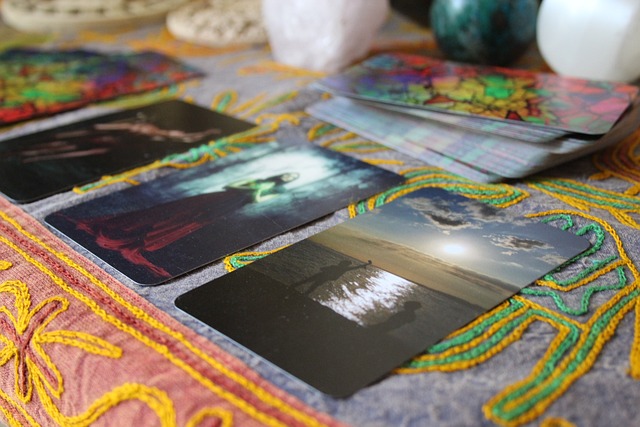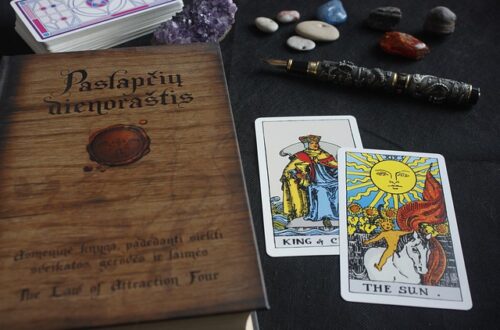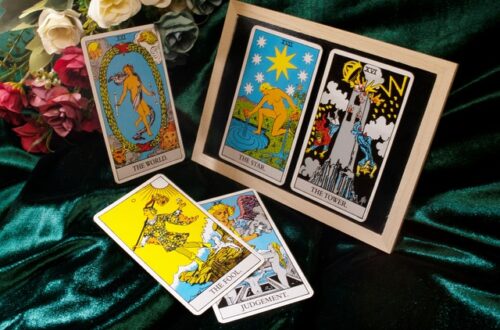
The Death Card: Transformation and Rebirth
Table of Contents
The Death Card: Transformation and Rebirth
In the world of tarot, the **Death card** is often one of the most misunderstood symbols. Contrary to its ominous name, this card represents **transformation and rebirth** rather than a literal end. This article delves into the multifaceted meanings of the Death card, exploring its significance in various contexts, including tarot readings, psychology, and personal growth.
The Symbolism of the Death Card
The **Death card**, numbered thirteen in the Major Arcana, portrays a skeletal figure riding a pale horse. This imagery evokes a sense of finality and change. However, the card’s true essence lies in its ability to signify the end of one phase and the beginning of another. The skull, often misconstrued as a grim symbol, actually represents the **potential for new beginnings**. In this sense, the Death card encourages individuals to embrace change, allowing them to let go of the old and welcome the new.
Understanding Transformation
At its core, the Death card embodies the concept of **transformation**. This transformation is not merely about loss; it is about the **metamorphosis** that follows. For instance, a caterpillar must undergo a profound transformation to become a butterfly. Similarly, the Death card reminds us that change can lead to growth and renewal. Whether it is a significant life event, a relationship change, or a career shift, the Death card urges us to view these transitions as opportunities for **personal evolution**.
The Cycle of Life and Death
The idea of life and death as a cycle is integral to the understanding of the Death card. Many cultures and philosophies acknowledge that **life is a series of cycles**—birth, growth, decay, and death. In nature, we see this cycle continuously: trees shed their leaves in the fall, only to bloom again in spring. This cyclical perspective invites individuals to accept that endings often herald new beginnings. When the Death card appears in a tarot reading, it serves as a reminder of this natural cycle, encouraging us to **embrace transitions**.
Read: https://magical-rituals.com/blog/2024/06/28/how-to-enhance-your-tarot-readings-with-crystals/
The Psychological Implications of the Death Card
From a psychological perspective, the Death card resonates with the concepts of **grief and acceptance**. When individuals confront significant losses—such as the death of a loved one or the end of a meaningful relationship—they often experience a profound transformation. This process involves navigating stages of grief, which can ultimately lead to a sense of renewal. The Death card invites individuals to reflect on their emotional experiences, facilitating a deeper understanding of their feelings and the changes they are undergoing.
Embracing Change and Letting Go
One of the most powerful lessons of the Death card is the importance of **letting go**. In many cases, people hold onto past experiences, relationships, or beliefs that no longer serve them. This attachment can hinder personal growth and transformation. The Death card encourages individuals to release these ties, enabling them to move forward. By letting go, individuals create space for new opportunities and experiences. This process can be challenging, but it is essential for embracing the transformative potential that the Death card represents.
The Role of Introspection
Introspection plays a vital role in the transformative journey symbolized by the Death card. By examining one’s thoughts, emotions, and behaviors, individuals can gain valuable insights into the changes they need to make. This self-reflection often leads to a clearer understanding of personal goals and aspirations. The Death card prompts individuals to engage in this introspection, facilitating a deeper connection with their inner selves. As a result, individuals can identify patterns that may be holding them back, paving the way for **personal evolution**.
Death Card in Tarot Readings
When the Death card appears in a tarot reading, its significance can vary depending on the context. While many may fear its presence, it is essential to interpret the card within the larger narrative of the reading. The Death card often suggests that a phase in the querent’s life is concluding, making way for new experiences. Rather than fearing this change, individuals should embrace it as a necessary step toward **personal growth**.
Positive Outcomes of the Death Card
The positive outcomes associated with the Death card are numerous. For instance, it can signify the end of unhealthy relationships, paving the way for healthier connections. Additionally, the Death card can represent a transformation in one’s career, such as pursuing a passion or starting a new venture. When viewed through this lens, the Death card becomes a symbol of hope and renewal, emphasizing the potential for **positive change**.
Common Misinterpretations
Despite its transformative potential, the Death card is often misinterpreted as a harbinger of doom. This misunderstanding arises from the card’s imagery and name, which evoke fear. However, it is crucial to recognize that the Death card does not predict literal death but rather signifies the **end of a cycle**. By reframing the card’s meaning, individuals can approach it with a sense of curiosity and openness to change.
Real-Life Applications of the Death Card’s Message
The transformative messages of the Death card can be applied in various aspects of life. For example, individuals can use the card’s symbolism to navigate significant life changes, such as moving to a new city, changing careers, or ending a relationship. By embracing the principles of transformation and rebirth, individuals can cultivate resilience in the face of change. This proactive approach allows individuals to harness the power of the Death card, viewing transitions as opportunities for growth.
Community and Support
Engaging with a supportive community can significantly enhance one’s ability to navigate transformation. Sharing experiences and insights with others who have undergone similar changes fosters a sense of connection and understanding. The Death card encourages individuals to seek out these communities, whether through support groups, workshops, or online forums. By connecting with others, individuals can gain valuable perspectives on their journeys, reinforcing the idea that they are not alone in their experiences.
Creating Rituals for Transition
Rituals can play a powerful role in honoring the transformative energy of the Death card. Creating personal rituals to mark significant transitions can facilitate a sense of closure and new beginnings. These rituals can be simple, such as writing a letter to release past experiences or holding a small ceremony to celebrate a new chapter. By incorporating rituals into their lives, individuals can acknowledge the importance of transformation and rebirth, reinforcing the card’s message.
Conclusion: Embracing the Death Card
The Death card, often feared and misunderstood, ultimately symbolizes **transformation and rebirth**. By embracing its message, individuals can navigate the inevitable changes in life with grace and resilience. The Death card serves as a reminder that endings are not to be feared but celebrated as opportunities for growth and renewal. Through introspection, letting go, and connecting with supportive communities, individuals can harness the transformative power of the Death card. As they embrace the cycles of life, they open themselves up to the infinite possibilities that await them on the journey of existence.
Bibliography
- Pollack, Rachel. *Seventy-Eight Degrees of Wisdom: A Tarot Journey to Self-Awareness*. 1st ed. Thorsons, 1980. ISBN: 978-0007110660
- Greer, Mary K. *Tarot for Your Self: A Workbook for Personal Transformation*. 1st ed. New Page Books, 2002. ISBN: 978-1577314000
- Hajo, Z. J. *Tarot and Psychology: Spectrums of Possibility*. 1st ed. D. A. P., 2010. ISBN: 978-1935358210
- Vandenberg, E. E. *The Tarot: A Key to the Wisdom of the Ages*. 1st ed. New Page Books, 2009. ISBN: 978-1601630126
- Caputi, Jane. *The Witches’ Book of the Dead*. 1st ed. Weiser Books, 2017. ISBN: 978-1578636001




